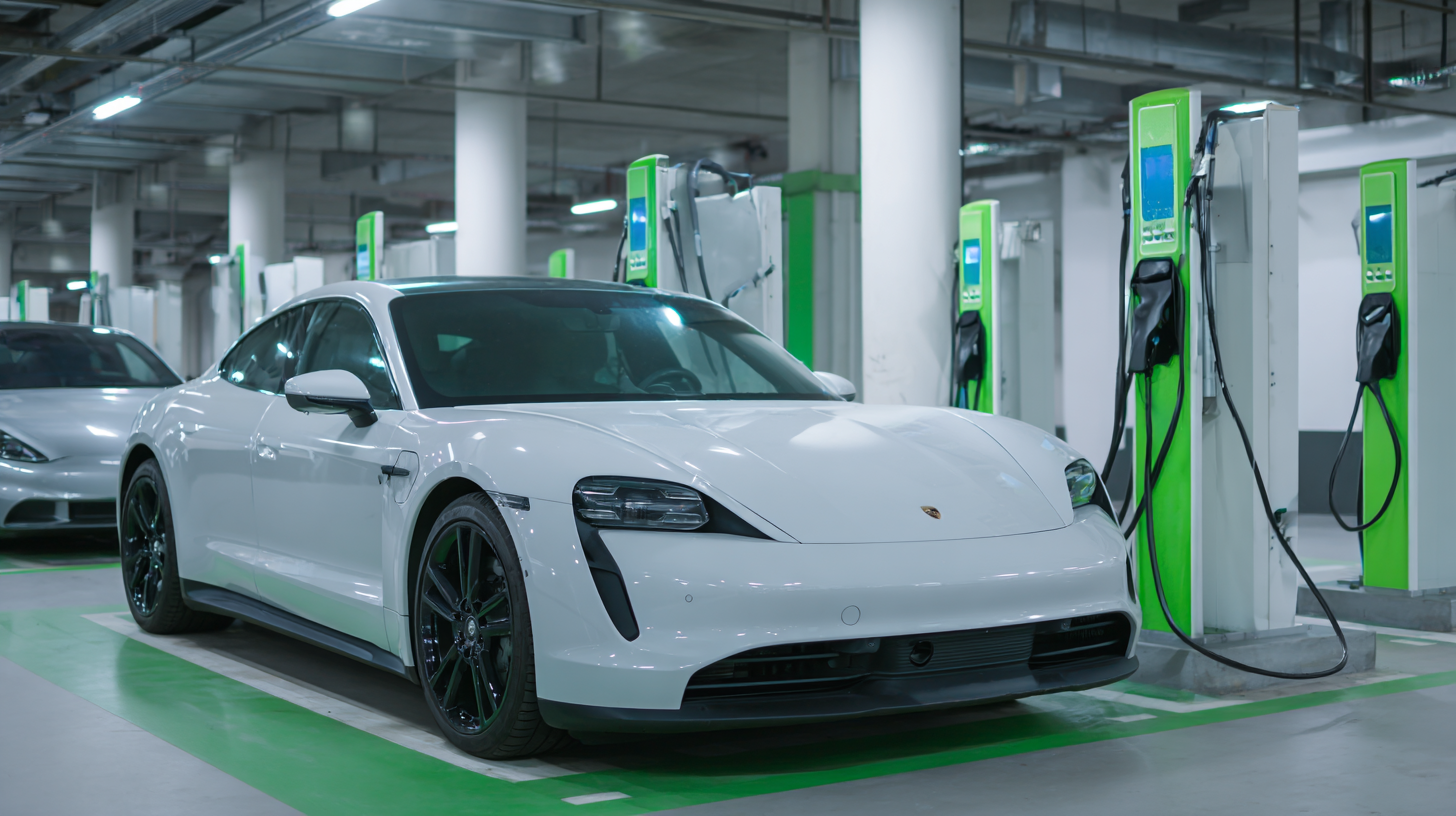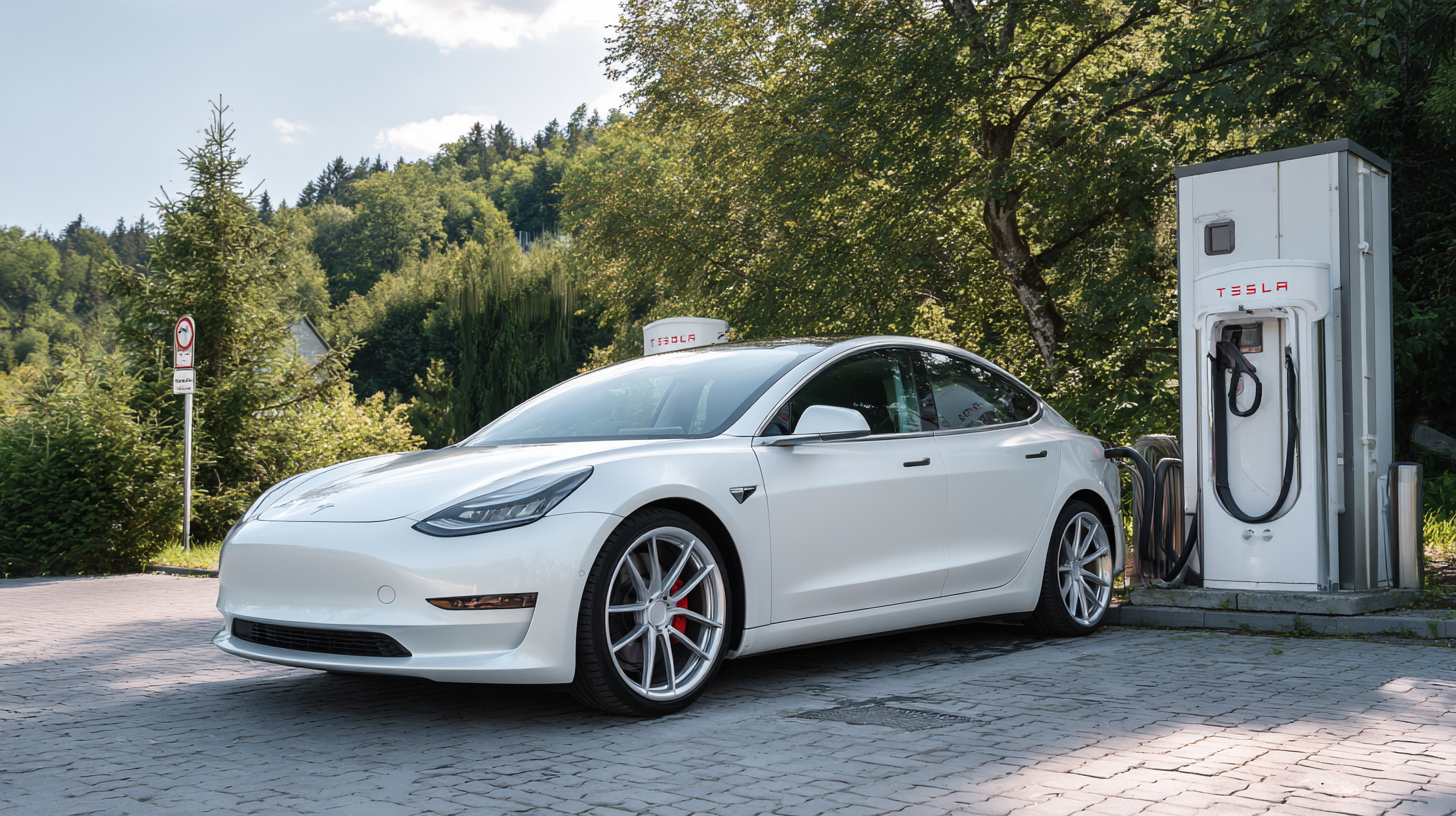As electric vehicle (EV) adoption continues to surge, driven by an estimated 54% growth in global sales projected from 2023 to 2025, the demand for reliable and efficient charging solutions becomes increasingly crucial. Among these, the Portable EV Charging Station has emerged as a key player in enhancing convenience for EV owners. According to a recent report by the International Energy Agency, the number of public charging stations is expected to increase significantly, necessitating portable options that cater to diverse charging needs. By 2025, the portable charging market is estimated to reach $1.2 billion, reflecting a growing awareness of flexible charging solutions. In this guide, we will explore the essential features, benefits, and considerations for selecting the best Portable EV Charging Station tailored to your unique requirements, ensuring you stay powered up no matter where the road takes you.

When it comes to charging your electric vehicle (EV), understanding the different charging levels is crucial for determining the best portable EV charging station to suit your needs. There are three main types of chargers: Level 1, Level 2, and DC Fast Chargers, each offering distinct benefits and limitations.
Level 1 chargers utilize a standard 120-volt outlet, making them the most accessible option for home charging. They are ideal for overnight charging or for those with minimal daily driving needs, as they typically provide about 4-5 miles of range per hour of charging. On the other hand, Level 2 chargers operate at 240 volts and deliver a faster charge, offering approximately 10-60 miles of range per hour. These are commonly found in public charging stations and are perfect for EV owners who require a quicker turnaround time or who frequently take longer trips.
For drivers seeking rapid charging capabilities, DC Fast Chargers are the most efficient option, delivering a substantial amount of charge in a short period—often up to 80% of battery capacity in just 30 minutes. However, they are more complex and typically found at dedicated charging stations rather than in home setups. Understanding these levels helps you choose a portable charging station that aligns with your driving habits and charging needs, ensuring that you maximize the convenience of owning an electric vehicle.
When selecting a portable EV charging station, there are several key factors to consider that can significantly impact your charging experience. First and foremost, compatibility with your electric vehicle is crucial. Different EV models may have varying connector types and charging standards, so ensuring that the portable charger can accommodate your specific vehicle is essential. Look for charging stations that offer multiple connector options or those that are versatile enough to work with various car brands.
Another important aspect to examine is charging power output. The charging speed can greatly affect how quickly your vehicle is ready for the road. Portable chargers typically range from Level 1 to Level 2, with Level 2 chargers providing faster charging times. Depending on how often you plan to use the charger and your driving habits, selecting a model with sufficient power output can save you valuable time. Additionally, consider factors such as portability, weight, and ease of installation, as these will influence how convenient it is to use and store your charging station when not in use.
When selecting a portable EV charging station, understanding the impact of amperage and voltage on charging speed is crucial. The CC-CV (Constant Current-Constant Voltage) charging strategy is commonly employed, enabling efficient energy transfer during both charging and discharging cycles. Recent studies have shown that optimizing charging sessions through this method can significantly enhance battery longevity, especially for electric vehicles with a State of Health (SoH) of up to 79%.
Charging speed is influenced not only by the voltage levels supplied but also by the amperage. Higher amperage can reduce charging time considerably; for instance, a typical Level 2 charger operates at 240 volts and can deliver anywhere from 16 to 80 amps, allowing for charging times that can range from several hours to under an hour depending on the vehicle’s battery capacity. Furthermore, data suggests that the pulsed current charging technique can further improve efficiency, resulting in faster charging cycles without compromising the battery's overall health. Thus, evaluating these specifications is essential in selecting the right portable charging station tailored to individual needs.

In 2023, the surge in electric vehicle (EV) adoption has led to an abundance of portable charging stations available on the market. Choosing the right one can be daunting, but understanding the top options can simplify your decision-making process.
Notable models include the ChargePoint Home Flex and the Siemens VersiCharge. The ChargePoint Home Flex offers versatile power levels, catering to varying charging needs, while the Siemens VersiCharge stands out for its user-friendly installation and smart technology features.
Pricing for portable EV chargers varies widely, with options ranging from around $300 to over $700. For budget-conscious consumers, the Blink portable charger provides a reliable and cost-effective solution without sacrificing performance. However, premium models like the JuiceBox 40 come packed with advanced features like Wi-Fi connectivity and energy monitoring, which may be worth the investment for frequent EV users. User reviews often highlight the convenience and versatility of these chargers, with many praising their efficiency and performance in diverse settings.
As you explore these options, consider your specific charging requirements and budget to find the best portable EV charger tailored to your lifestyle.

When selecting a portable EV charging station, understanding the safety standards and certifications is crucial for ensuring that your equipment is both reliable and safe to use. Look for chargers that comply with recognized standards such as Underwriters Laboratories (UL) and the International Electrotechnical Commission (IEC). These certifications guarantee that the equipment has undergone rigorous testing to meet specific safety protocols, reducing the risk of electrical hazards and ensuring longevity.
In addition to UL and IEC certifications, you should also consider features like built-in fault protection, weather-resistance ratings, and the presence of safety shut-off mechanisms. These elements not only enhance user safety but also protect your electric vehicle from potential damage during charging. Opting for a charging station that meets or exceeds these safety standards will provide peace of mind during each charging session, allowing you to focus on the road ahead rather than worrying about equipment failure or safety risks.
